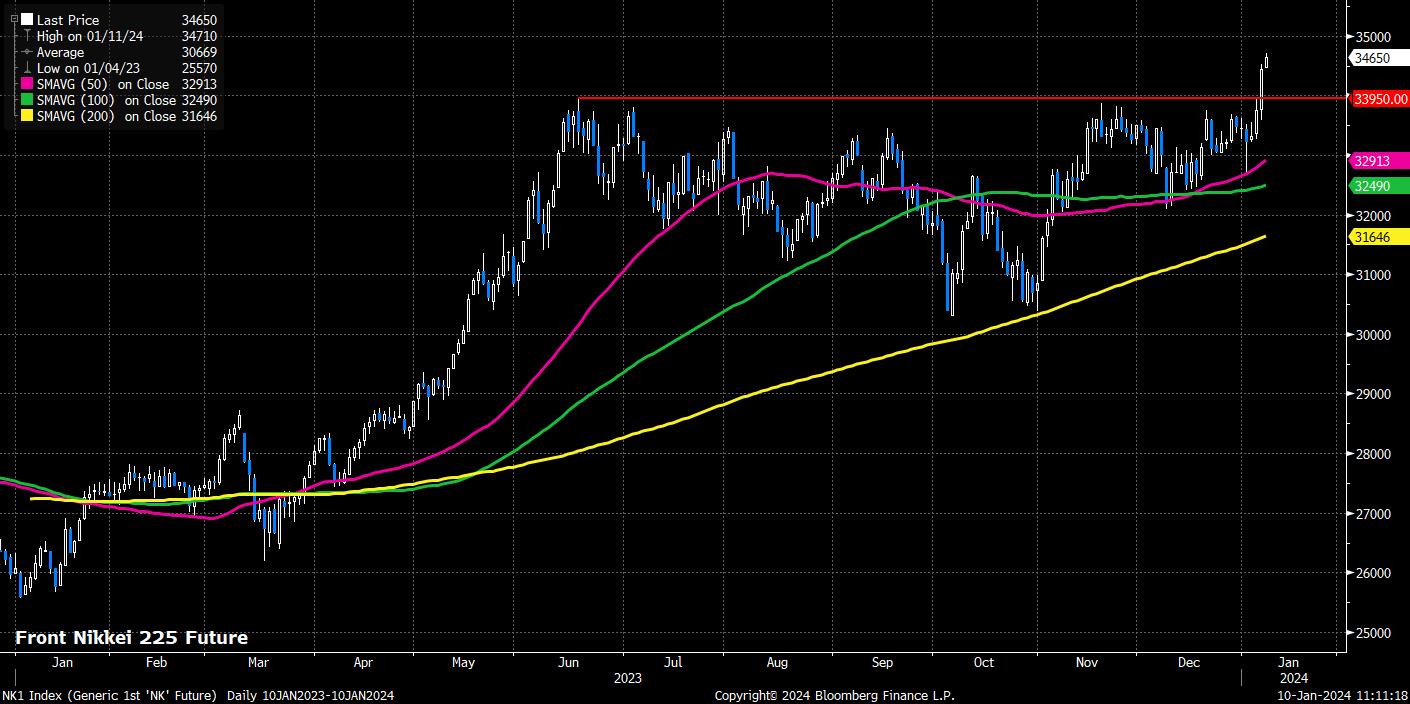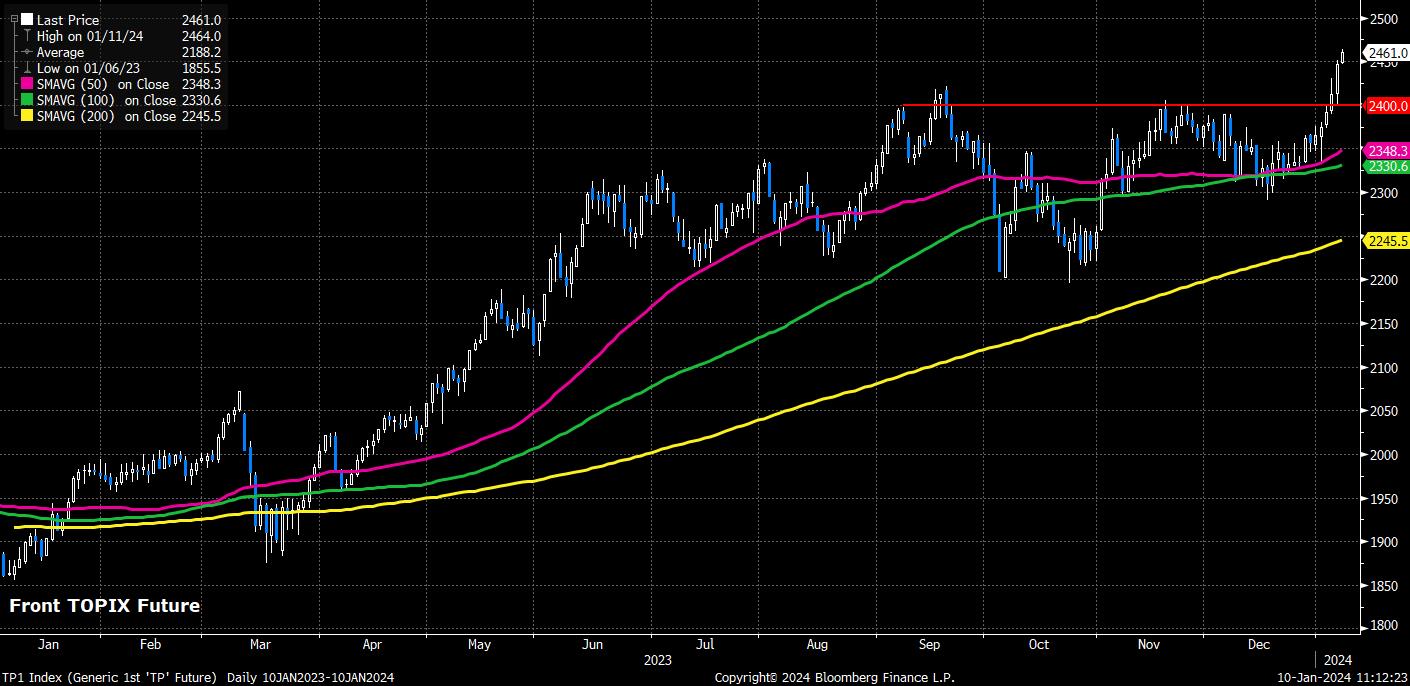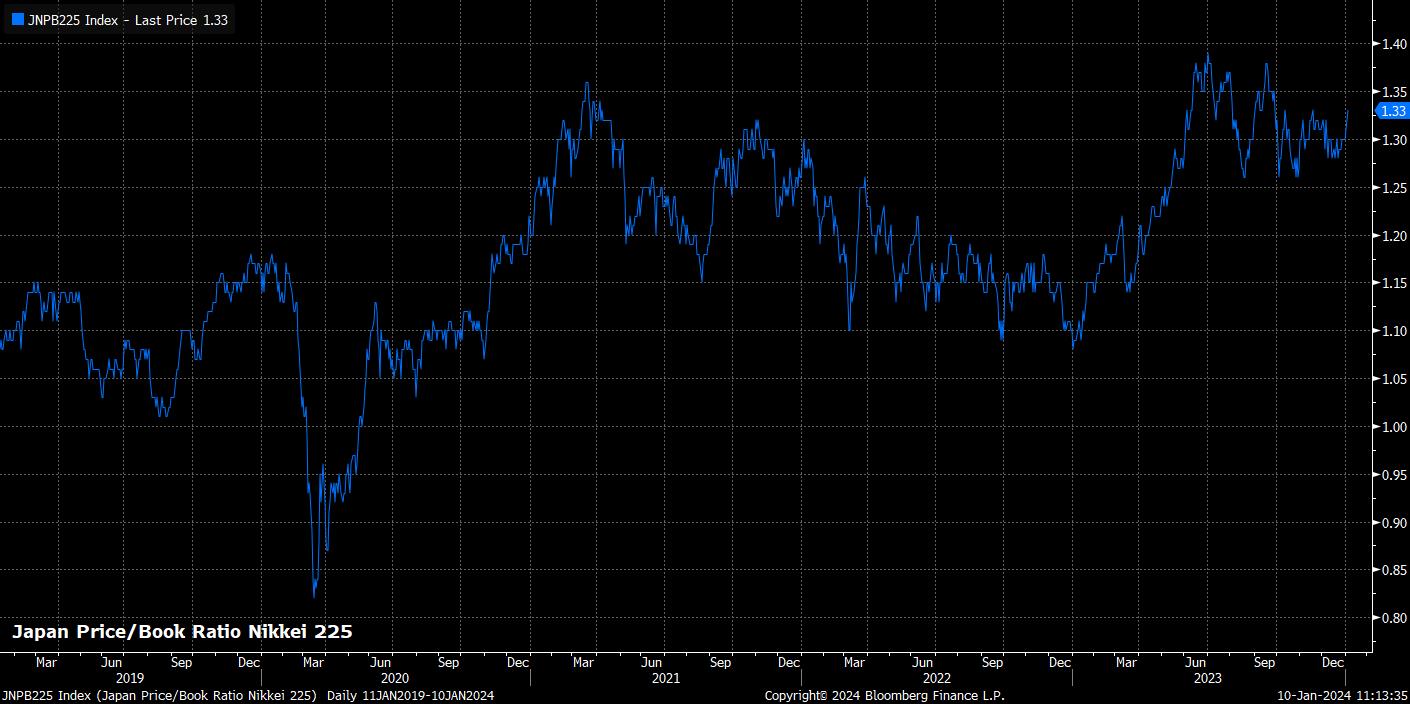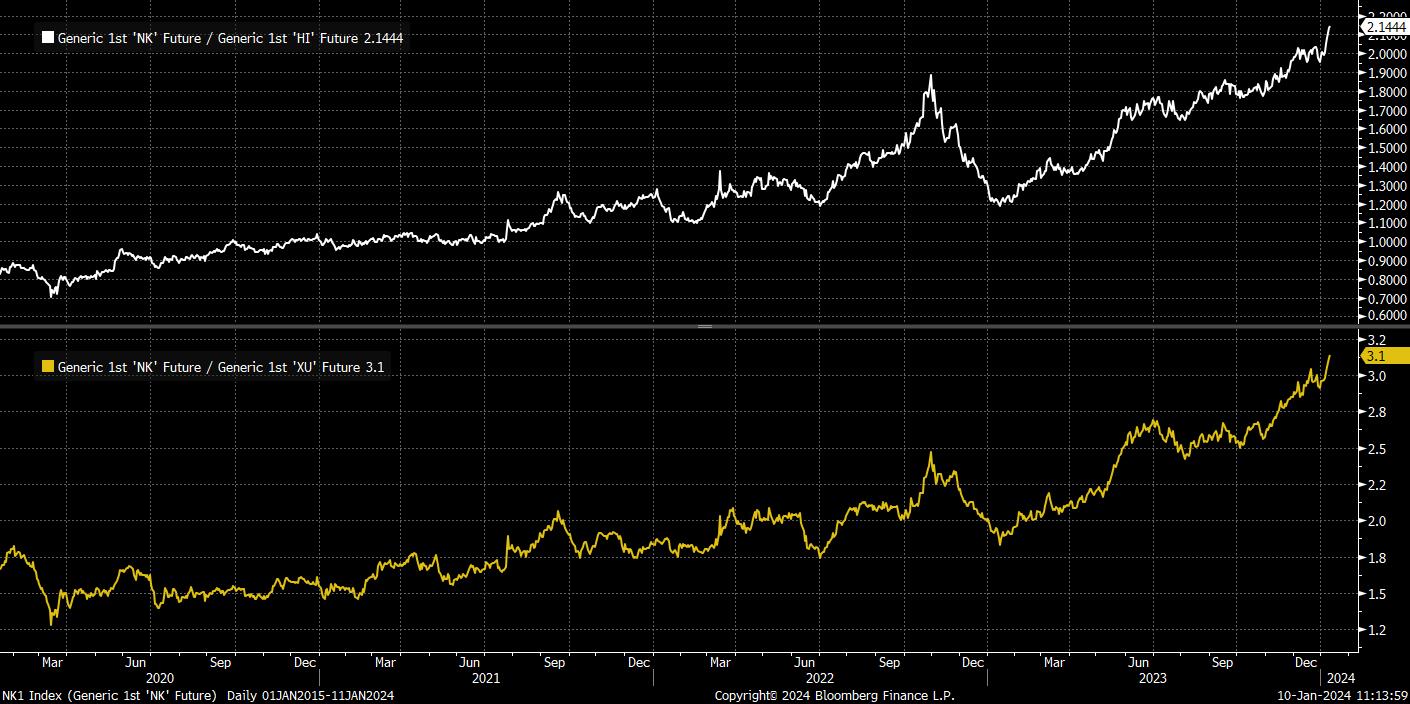分析
Said start has seen the Nikkei notch a 4-day winning streak at the time of writing, rapidly recovering from a shaky first few trading sessions of the year. This streak has seen the market break above longstanding resistance at 34,000, to trade at its best level in 34 years.

The Nikkei, however, while headline-grabbing, is rather flawed due to its nature as a price-weighted index, the exact issue that the Dow also faces. Hence, as a benchmark for Japanese equity performance, the broader TOPIX index is a much better barometer, even if it also uses a somewhat flawed free float weighting method.
Nevertheless, the TOPIX has displayed even stronger performance than the Nikkei of late, having rallied for 6 straight sessions, the index’s best run since last September.

Given the impressive manner in which Japanese equities have kicked-off the year, many are questioning whether this strong performance can continue. The balance of risks, at this stage, points to further gains over the medium-term, though short-term pullbacks (which will likely prove buying opportunities) cannot be ruled out if the upside momentum were to become a little over-extended.
Clearly, as the charts above show, the technical basis for further gains is strong, with both benchmark indices having now made clean, closing breaks of resistance that has held firm for much of the last 6-9 months.
Furthermore, the fundamental bull case for Japan is also looking promising, particularly considering the ongoing corporate reforms that are taking place within the country. Beginning last year, the Tokyo Stock Exchange (TSE) at long last decided to crack on with much needed reforms, threatening firms with a price/book (P/B) ratio of less than one with the prospect of being delisted were they unable to improve profitability, or explain what could reasonably be considered an incredibly inefficient use of capital.
Said reforms have forced a significant rethink among Japanese firms as to how shareholders are viewed, diminishing long-standing resistance to what had been near-deafening calls for greater profitability. In addition to likely improving profitability, the reforms have also already led to a surge in share buybacks, which rose to their highest level in almost two decades in the last fiscal year, while also raising the prospect of increased capital returns to shareholders in the form of higher dividends.

The impact of these reforms should continue to be felt over the course of the year ahead, while the Japanese market is also increasingly likely to attract inflows from international investors seeking exposure to Asia, with many still being unwilling to take on exposure to China, owing to long-running governance concerns, in addition to the country’s still-dismal economic outlook, and the apparent remote prospects of any kind of ‘shock and awe’ fiscal stimulus being on the horizon.
As such, a long Japan/short China, or long Japan/short Hong Kong position is one that may continue to bear fruit over coming months, with such positions having been almost entirely one-way traffic since the early days of the pandemic in Q1 2020, and having gained further momentum of late.

There are, however, a couple of risks that are important to note, with the outlook for Japanese stocks unlikely to be entirely smooth sailing.
Firstly, and in reference to the spread trades mentioned above, a bullish China view has become very much the consensus opinion for the year ahead. While the economy remains weak, with the property sector still struggling significantly, the market is considered ‘cheap’ on many measures, and hence is seen as offering value by many. Of course, a ‘cheap’ market can get significantly cheaper, with low valuations no guarantee of a rally – just ask anyone who’s looked closely at the London market over the last decade or so.
Secondly, and more specifically to Japanese equities, is the matter of the JPY. There has, for as long as most can remember, been a tight inverse correlation between the value of the yen, and the level of the Nikkei, owing largely to exporters’ profits benefitting from a depreciating currency.
_Daily_10_2024-01-10_11-27-27.jpg)
This is an important correlation to be aware of, given that the coming 12 months are likely to see the Bank of Japan (BoJ) formally conclude years of yield curve control (YCC), and bring to an end the era of negative rates via at least one 10bp rate hike, a move which, if delivered, would be the first such hike in almost two decades.
If this were to pan out, as seems likely to be the case, the BoJ will likely find themselves as a hawkish outlier among G10 central banks, the remainder of which are all likely to embark on easing cycles, likely from the second quarter onwards, as inflation continues to return back to policymakers’ 2% targets. Such a status for the BoJ would likely result in a tightening of RoW-Japan yield spreads, and thus upward pressure on the currency, potentially posing a stiff headwinds for equities to battle.
Related articles
此处提供的材料并未按照旨在促进投资研究独立性的法律要求进行准备,因此被视为营销沟通。虽然它并不受到在投资研究传播之前进行交易的任何禁令,但我们不会在向客户提供信息之前谋求任何优势。
Pepperstone并不保证此处提供的材料准确、及时或完整,因此不应依赖于此。无论是来自第三方还是其他来源的信息,都不应被视为建议;或者购买或出售的要约;或是购买或出售任何证券、金融产品或工具的征求;或是参与任何特定交易策略。它并未考虑读者的财务状况或投资目标。我们建议此内容的读者寻求自己的建议。未经Pepperstone批准,不得复制或重新分发此信息。

